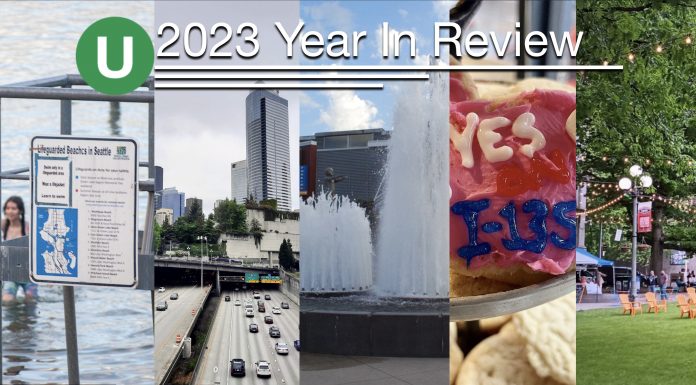
We’ve all had a busy year. Really, there were four elections. Sure, that’s a regular occurrence in Seattle, but it’s still a lot. So, with one last look back, let’s say goodbye to the year that was by clearing the table on readings we coulda, shoulda, didn’t get to. Here are five articles that you may have missed in The Urbanist in 2023.
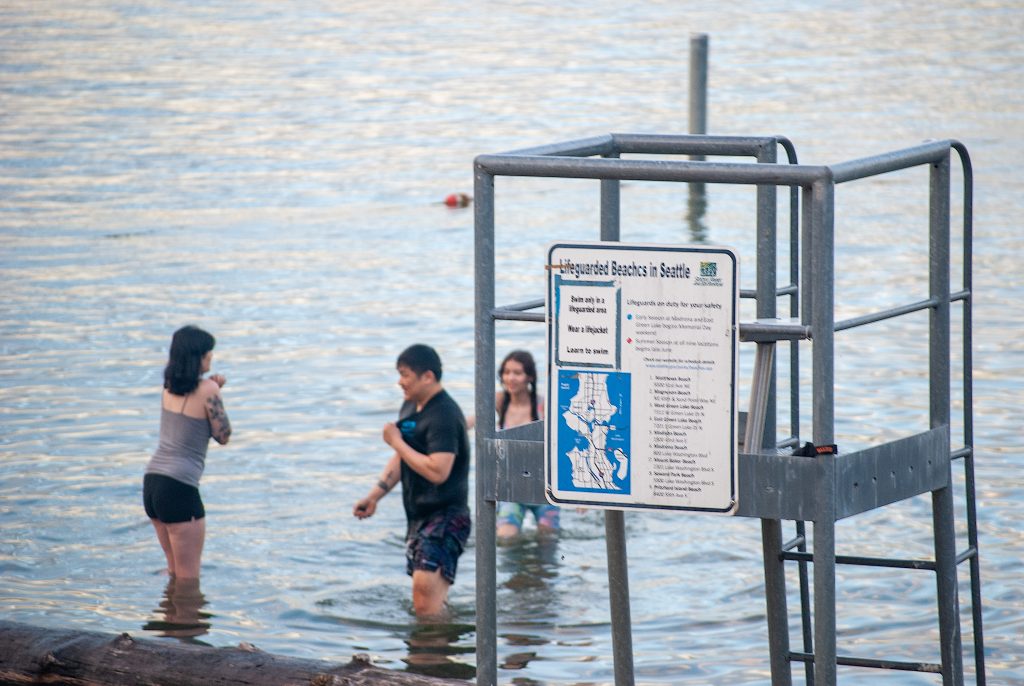
Drownings Spike in Urban Waters, Hitting People of Color Hardest by Ashli Blow – July 20, 2023
It may be the middle of winter now, but a changing climate means there is less time to wait before we’ll be looking towards a refreshing dip in the pool. That has meant an increasing number of drowning deaths over recent years. Some of those fatalities come from the shores of South Seattle, which hosts some of the City’s most racially diverse neighborhoods. Author Ashli Blow observes the double whammy hitting Seattle’s most diverse communities:
“Not only are communities of color living in heat islands with limited cooling infrastructure, but they have also been historically excluded from places where they would have opportunities to learn how to swim.” Community pools have been some of the most contentious fights in the move to desegregate America, and Seattle was no exception.
Fortunately, pilot programs like Swim Seattle and No More Under are working to reduce the barriers between cooling pools and the people who have historically been excluded. State commitments to provide swim education to all children have passed the legislature. Next, officials will be looking towards beach design and clean water regulation to ensure that a day at the beach remains just that.
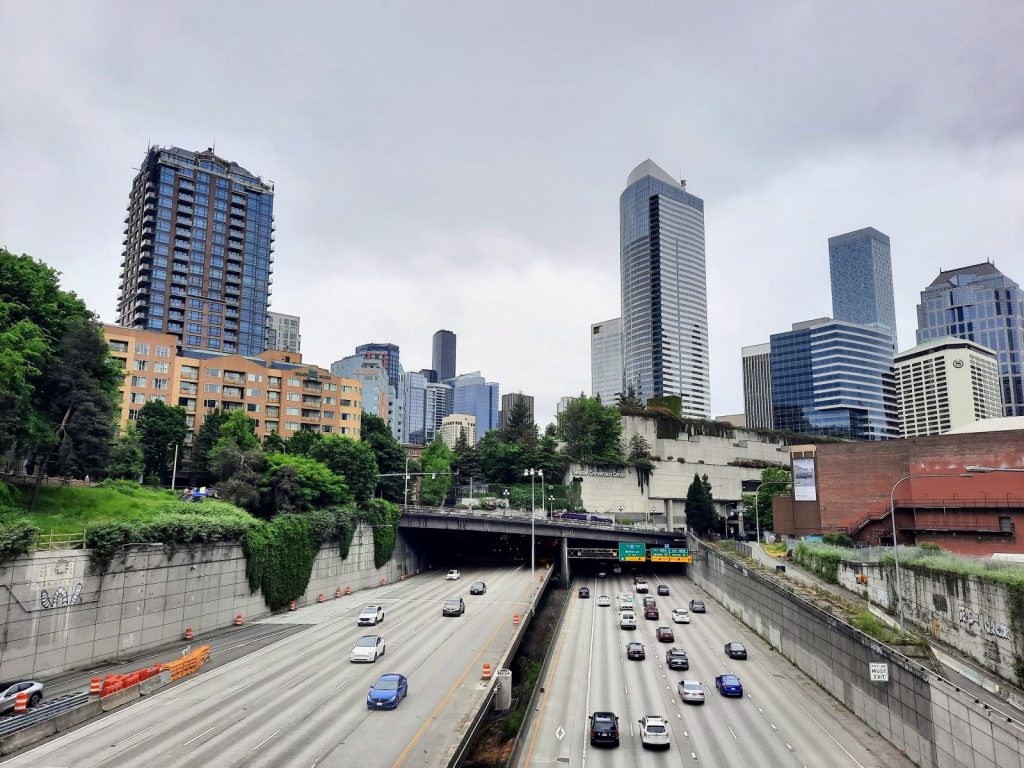
Americans Are Ready to Move On from Highway Expansion Even if Politicians Persist by Doug Trumm – June 29, 2023
From the middle lane of I-5, both traffic and the continued construction of highways may seem inevitable. But a growing number of Americans are moving to support increasing investment in alternatives to cars. The question is whether their elected representatives will follow. Author Doug Trumm covered the politics of the poll.
“Public opinion has turned against highway expansion, after decades of never-ending expansion that largely failed to solve congestion or improve quality of life over the long term. People think differently than the departments of transportation tasked with meeting their needs.”
The findings came from a nation-wide poll that was echoed by several national advocacy groups. Washington fared poorly in the analysis, having 76% of its transportation budget devoted to highway expansion. An impending Columbia River bridge replacement is bloating to megaproject heft, and continued connections onto I-5 are dividing neighborhoods.
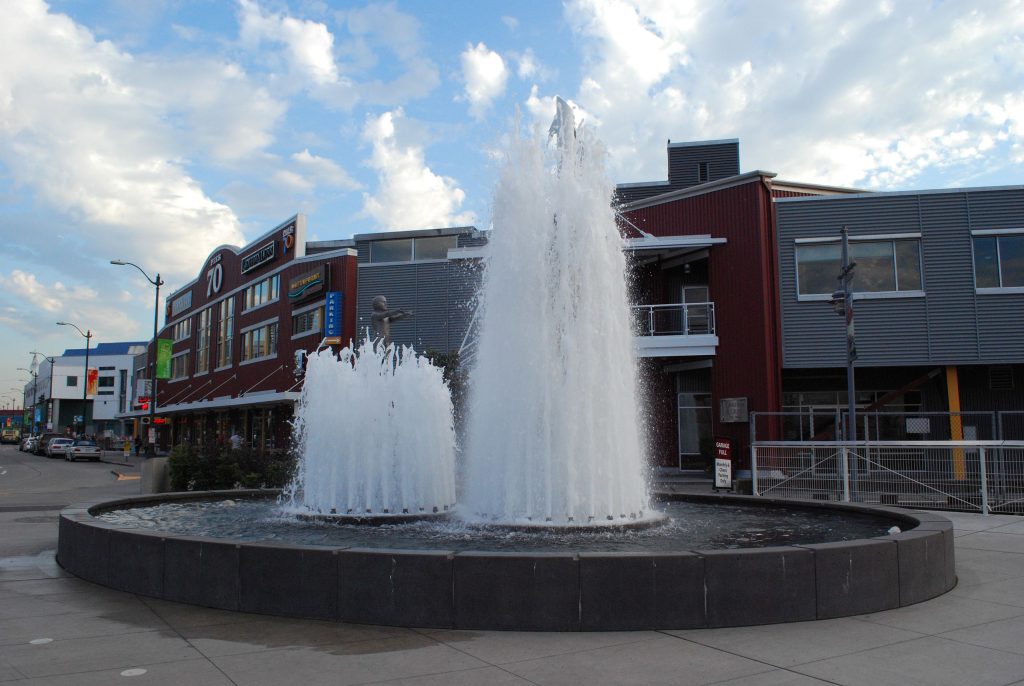
The Sexiest Part of the Zoning Ordinance by Ray Dubicki, November 3, 2023
It’s not always the overt, neon places that show a community’s peccadillos. Sometimes the base instincts aren’t even overt, instead buried deep in the documents that organize a city’s land use. Ray Dubicki found some in the region’s zoning ordinances, mostly by searching for one unique word:
“I did most of the code searching for this article based on the term ‘areola’ because it’s a word that only shows up when talking nudity laws, even when terms about nudity, sex, or morals are not used.”
Which is where it gets really interesting. These are the last bastions of gendered language in the ordinances. Elsewhere, the ordinances go to pains emphasizing that rules of construction don’t see gender. However, every ordinance sexualized female breasts. These deep and knotted provisions carry a lot of value judgements of a particular time, opposing both changing morals and in the changing view of genders.
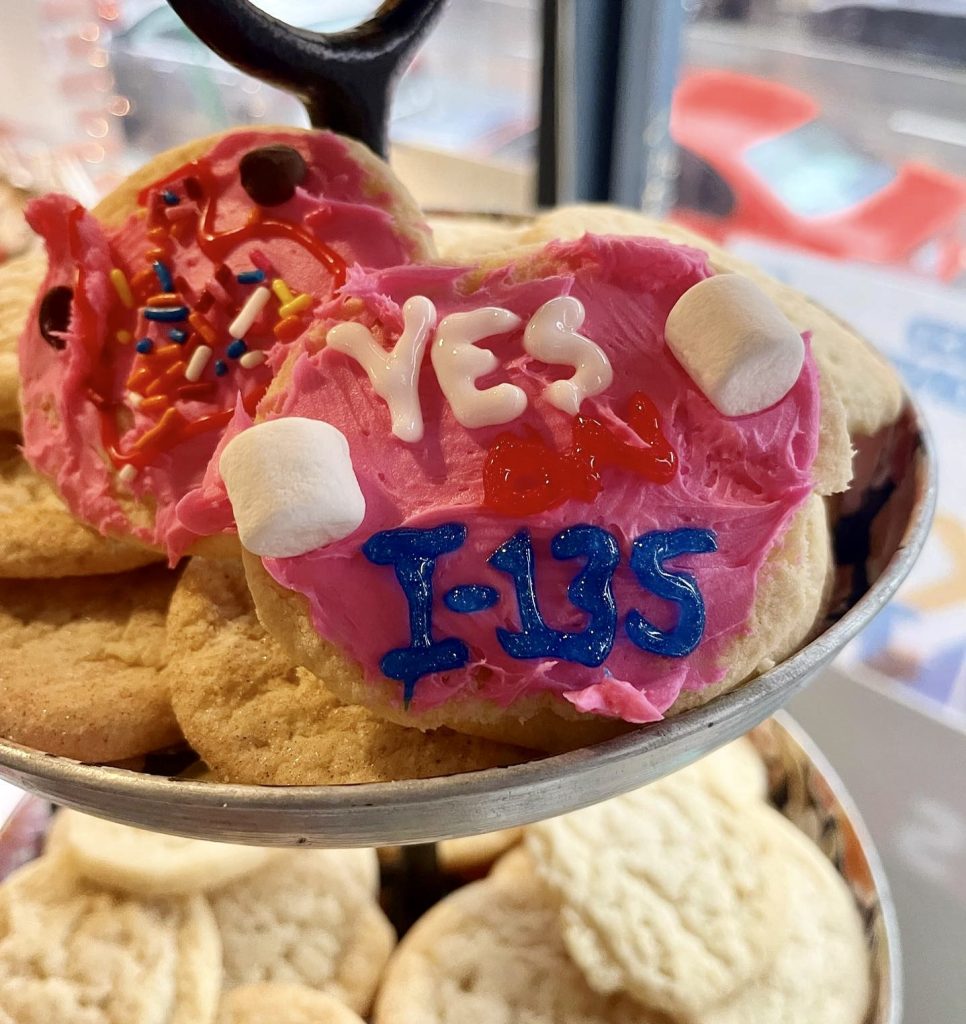
Seattle Social Housing Initiative’s Recipe for Success by Natalie Bicknell Argerious – February 22, 2023
In February, Seattle voters passed Initiative 135 creating a public development authority to develop, own and manage social housing in the city. The organization leading the successful charge was House Our Neighbors. The group formed in 2021 to push back against the misnamed and inhumane “Compassion Seattle” initiative that tried to use unfunded mandates to bind city expenditures and force sweeps of those experiencing homelessness.
Natalie Bicknell Argerious followed the history of the successful I-135 through the organization’s experience:
“Camille Gix worked on the drafting process from beginning to end. By her account, it was a more vigorous effort than people who have criticized the initiative realized. ‘We’ve heard a lot of critique about how it was very half-baked or what not. Even from supporters who think that it wasn’t well thought through. And you know, that is not only a bit offensive and patronizing, but it’s just not true either,’ Gix said.
From research groups to gathering signatures in the field to effectively mobilizing a vote, the 18-month process resulted in a new tool in the City’s ability to engage housing affordability and homelessness. It also emboldened a successful organization to look beyond just being a public developer and continue advocacy for comprehensive plan updates and housing priorities.
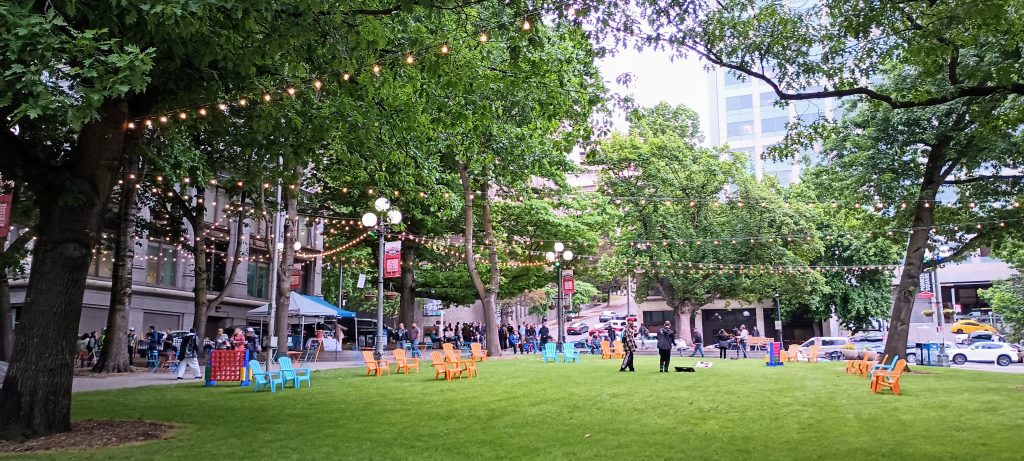
City Hall Park Reopens After Nearly Two Years, Still a City Asset by Ryan Packer – June 14, 2023
One of the many rippling impacts of the pandemic has been reconsideration of public spaces. While parks have been contested space in recent years, public safety scares and health closures have impacted the City’s green spaces. None have been more in the spotlight than City Hall Park due to its showcase location near Pioneer Square, city offices, and frequently debated Third Avenue. After closing for two years, Ryan Packer covered the park’s reopening:
“The City had used every tool in the toolbox to liven up the park on its first day, from food trucks parked along the Fourth Avenue sidewalk, an added restroom near Third Avenue, added seating and lawn games, and, most importantly, a ton of people eager to check out the refreshed park space, in the shadow of the King County Courthouse.”
The journey for City Hall Park’s reopening ran a gauntlet of land swaps, threatened county take over, and budget cuts. In the end, it leaned on the things that most public spaces need: attention.
Ray Dubicki is a stay-at-home dad and parent-on-call for taking care of general school and neighborhood tasks around Ballard. This lets him see how urbanism works (or doesn’t) during the hours most people are locked in their office. He is an attorney and urbanist by training, with soup-to-nuts planning experience from code enforcement to university development to writing zoning ordinances. He enjoys using PowerPoint, but only because it’s no longer a weekly obligation.


